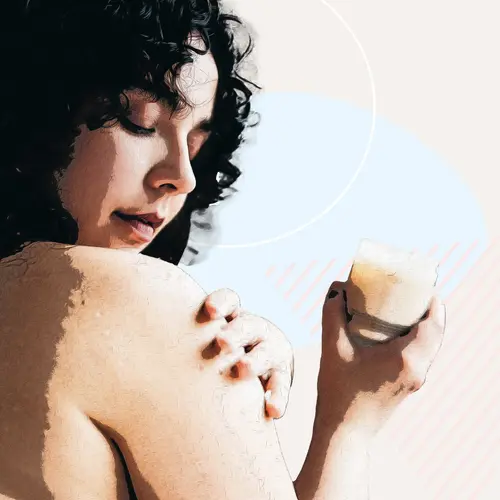Erythrasma is a skin condition that causes red or brown patches. A lot of people have erythrasma, but some people are more likely to get it.
What Causes Erythrasma?
Erythrasma is a skin condition caused by the normal skin bacteria Corynebacterium minutissimum. Erythrasma is also called cutaneous erythrasma. It is usually an ongoing or long term health condition.
Anyone can get erythrasma, but it’s most common in adults and men. People who live in warm and humid climates are more likely to get erythrasma. It can affect other people with certain health conditions. These include people who:
- Have poor hygiene
- Have obesity
- Have diabetes
- Sweat a lot
- Are older
- Have a weakened immune system
- Have other skin disorders
People who live in shared living spaces are also more likely to get erythrasma. This includes student dorms, residential nursing homes, and barracks.
Types of Erythrasma
There are three types of cutaneous erythrasma.
Interdigital erythrasma. This type is a bacterial infection on your feet. It usually happens between your last two toes. Sometimes people also have fungal infections on the foot at the same time.
Intertriginous erythrasma. This type affects areas where your skin touches and rubs itself. It’s most commonly seen in people who have type 2 diabetes.
The infection usually shows up in skin folds, including:
- Armpit
- Groin
- Under breasts
- Crease between buttocks
- Belly button
- Thighs
This infection can develop between the folds of excess fat on your stomach or legs where the skin chafes.
Generalized erythrasma. This type is also called disciform. It is rare and can appear anywhere on your body. Women who live in tropical climates are more likely to get this type. It can be an early sign of type 2 diabetes.
Symptoms of Erythrasma
Most people have signs of erythrasma where there’s a change in the skin. This can look like:
- Red patches
- Pink patches
- Brown patches
- Scaly skin
- Cracking skin, especially on your feet
- Softened or macerated skin
- Skin that looks wrinkly
On darker skin, erythrasma can look like a patch of skin with loss of color but darker than normal edges.
Lots of people who have erythrasma don’t have any symptoms. Some people can have burning and itchiness, particularly if there is an infection in the groin.
Diagnosis for Erythrasma
Erythrasma can look like other skin conditions, so your doctor might need to do some tests to rule these out. It can look like:
- Tinea versicolor
- Inverse psoriasis
- Candidiasis
- Dermatophytosis
- Seborrheic dermatitis
- Pityriasis rotunda
Wood’s lamp. The erythrasma wood’s lamp test is noninvasive and uses a lamp to shine ultraviolet light on your skin. The bacteria that cause erythrasma make compounds called porphyrins that show a red fluorescence under the light.
Sometimes other bacteria or fungi can also show up under the light. This might give you a false positive. Your doctor might use other tests to confirm the diagnosis and rule out other problems.
Potassium hydroxide. This test is also called a KOH preparation test. Your doctor will scrape your skin and add the pieces to a microscope slide. They will add potassium hydroxide to the skin cells and examine them under the microscope. This will help tell whether the infection is bacterial or fungal.
Skin biopsy. Sometimes your doctor might perform a biopsy by removing a small piece of your skin and having the lab examine it. This is rare and might only be done if other tests aren’t clear or you’re not responding to treatment.
Erythrasma Treatment
Your doctor will give you medication for your skin infection. This might be a cream, but if your infection is severe, you might also be given pills.
Treatments for erythrasma include:
- Benzoyl peroxide
- Clindamycin cream
- Erythromycin cream
- Fusidic acid cream
- Mupirocin cream
- Whitfield’s ointment
- Clarithromycin pills
- Erythromycin pills
- Tetracycline pills
Your doctor might recommend some other self-care practices to help your skin.
Good hygiene. Practice good hygiene practices. Keep the affected area clean and dry. You can wash your skin with regular soap or an antimicrobial soap that has aluminum chloride or chlorhexidine.
Over-the-counter products. You can treat your erythrasma with over-the-counter products that help with itchiness and irritation. This might include hydrocortisone cream or miconazole cream.
Light clothing. If you live in a hot and humid climate, wear light and loose cotton clothing to help with sweating. This will wick the sweat off your body. Try to stay in cool areas or in the shade. Keep your house temperature cool too.
Baby powder. You can apply baby powder to areas that are always damp like your groin, armpits, or larger skin folds.
Eat a healthy diet. Diabetes is a major contributor to getting erythrasma. It’s important to eat a healthy diet and limit sugar.
Erythrasma is a common skin condition. Sometimes it can come back again after you’ve treated it. If your skin changes, make sure to talk to your doctor for help.

